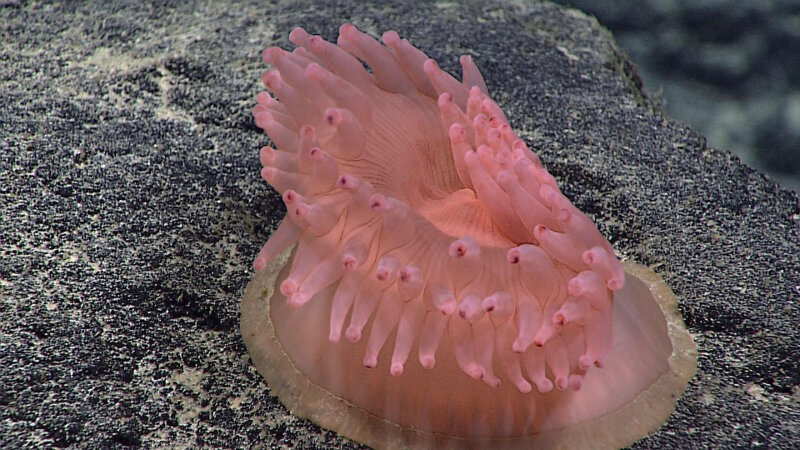Dive 16 was our third dive on a guyot, a flat-topped seamount. We began our dive at ~1,925 meters, and like at each of our other two guyot dives, we were surprised by what we saw. The seafloor at this site was composed of poorly sorted rock clasts in a cemented crust. As we continued to move upslope along the ridge, we encountered larger manganese-encrusted talus pieces, with intermittent sediment pockets. At the ridge axis, we saw more intact manganese-encrusted pillow lavas. The fauna was not very dense on this dive; the site was dominated by sponges, including many massive Poliopogon (family Pheronematidae) sponges. We also saw sponges from the families Farreidae, Euplectellidae, Ucinateridae, and Cladorhizidae. There were relatively few corals, which included chrysogorgiids, isidiids and Anthomastus sp.. We saw anemones, a scaleworm, squat lobsters, a lithodid crab that appeared to be feeding on a sponge, and a dead sponge with a brisingid sea star and crinoids living on it. We also saw several cutthroat eels (Synaphobranchus sp.), and cusk eels (Spectrunculus sp.). Due to a problem with the remotely operated vehicle hydraulics, we were unable to make any collections at this site.
